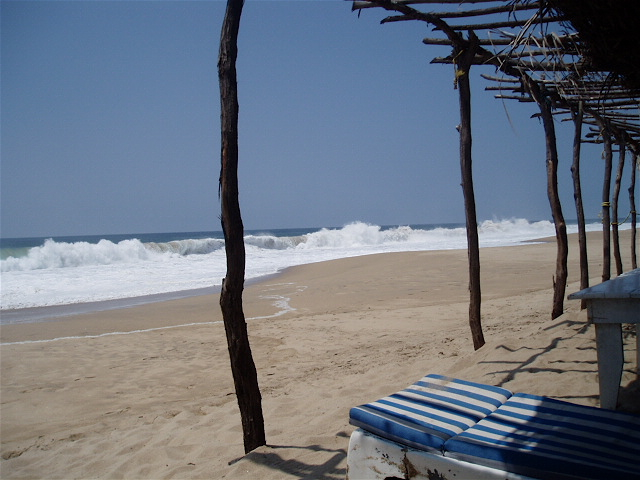10.4 The implications of ‘open’ for course and program design: towards a paradigm shift?
Although in recent years MOOCs have been receiving all the media attention, I believe that developments in open educational resources, open textbooks, open research and open data will be far more important than MOOCs and far more revolutionary. Here are some reasons why.
10.4.1 Nearly all content will be free and open
![]()

Image: © Tony Bates 2015 CC BY-NC
![]()
Eventually most academic content will be easily accessible and freely available through the Internet – for anyone. This could well mean a shift in power from teachers and instructors to students. Students will no longer be dependent particularly on instructors as their primary source of content. Already some students are skipping lectures at their local institution because the teaching of the topic is better and clearer on OpenCourseWare, MOOCs or the Khan Academy. If students can access the best lectures or learning materials for free from anywhere in the world, including the leading Ivy League universities, why would they want to get content from a middling instructor at Midwest State University? What is the added value that this instructor is providing for their students?
There are good answers to this question, but it means considering very carefully how content will be presented and shaped by a teacher or instructor that makes it uniquely different from what students can access elsewhere. For research professors this may include access to their latest, as yet unpublished, research; for other instructors, it may be their unique perspective on a particular topic, and for others, a unique mix of topics to provide an integrated, inter-disciplinary approach. What will not be acceptable to most students is repackaging of ‘standard’ content that can easily be found elsewhere on the Internet and at a higher quality.
Furthermore, if we look at knowledge management as one of the key skills needed in a digital age, it may be better to enable students to find, analyze, evaluate and apply content than for instructors to do it for them. If most content is available elsewhere, what students will look for increasingly from their local institutions is support with their learning, rather than the delivery of content. This means directing them to appropriate sources of content, helping when students are struggling with concepts, and providing opportunities for students to apply their knowledge and to develop and practice skills. It means giving prompt and relevant feedback as and when students need it. Above all, it means creating a rich learning environment in which students can study (see Appendix 1). It means moving teaching from information transmission to knowledge management, from selecting, structuring and delivering content to learner support.
Thus for most students within their university or college (with the possible exception of the most advanced research universities) the quality of the learning support will eventually matter more than the quality of content delivery, which they can get from anywhere. This is a major challenge for instructors who see themselves primarily as content experts.
10.4.2 Modularisation
![]()

Image: Cliff, Flickr, © CC Attribution 2.0
![]()
The creation of open educational resources, either as small learning objects but increasingly as short ‘modules’ of teaching, from anywhere between five minutes to one hour of material, and the increasing diversification of markets, is beginning to result in two of the key principles of OER being applied, re-use and re-mix. In other words, the same content, available in an openly accessible digital form, may be integrated into a range of different applications, and/or combined with other OER to create a single teaching module, course or program, as in Scenario H.
The Ontario government, through its online course development fund, is encouraging institutions to create OER. As a result, several universities have brought together faculty within their own institution but working in different departments that teach the same area of content (for example, statistics) to develop ‘core’ OER that can be shared between departments. The logical next step would be for statistics faculty across the Ontario system to get together and develop an integrated set of OER modules on statistics that would cover substantial parts of the statistics curriculum. Working together would have the following benefits:
- higher quality by pooling resources (two subject expert heads are better than one, combined with support from instructional designers and web producers);
- more OER than one instructor or institution could produce;
- subject coherence and lack of duplication;
- more likelihood of faculty in one institution using materials created in another if they have had input to the selection and design of the OER from other institutions.
As the range and quality of OER increases, instructors (and students) will be able to build curriculum through a set of OER ‘building blocks’. The aim would be to reduce instructor time in creating materials (perhaps focusing on creating their own OER in areas of specific subject or research expertise), and using their time more in supporting student learning than in delivering content.
10.4.3 Disaggregation of services
Open education and digitisation enable what has tended to be offered by institutions as a complete bundle of services to be split out and offered separately, depending on the market for education and the unique needs of individual learners. Learners will select and use those modules or services that best fit their needs. This is likely to be the pattern for lifelong learners in particular. Some early indications of this process are already occurring, although most of the really significant changes are yet to come.
![]()

Image: © Aaron ‘tango’ Tan, Flickr, CC Attribution 2.0
![]()
10.4.3.1 Admission and program counselling
This is a service already offered by Empire State University, a part of the State University of New York. Adult learners considering a return to study or a career change can receive mentoring about what courses and combinations they can take from within the college that fit with their previous life and their future wishes. In essence, within boundaries potential students are able to design their own degree. In the future, some institutions might specialise in this kind of service at a system level.
10.4.3.2 Learner support
Students may have already determined what they want to study through the Internet, such as a MOOC. What they are looking for is help with their studies: how to write assignments, where to look for information, feedback on their work and thinking. They are not necessarily looking for a credit, degree or other qualification, but if they are they will pay for assessment separately. Currently, students pay private tutors for this service. However, it is feasible that institutions could also provide this service, provided that a suitable business model can be built.
10.4.3.3 Assessment
Learners may feel that through prior study and work, they are able to take a challenge exam for credit. All they require from the institution is a chance to be assessed. Institutions such as Western Governors’ University or the Open Learning division of Thompson Rivers University are already offering this service, and this would be a logical next step for the many other universities or colleges with some form of prior learning assessment or PLAR.
10.4.3.4 Qualifications
Learners may have acquired a range of credits, badges or certificates from a range of different institutions. The institution assesses these qualifications and experiences and helps the learner to take any further studies that are necessary, then awards the qualification. Prior learning assessment or PLAR is one step in this direction, but not the only one.
10.4.3.5 Fully online courses and programs
For learners who cannot or do not want to attend campus, the cost would be lower for a such courses than for students receiving a full campus experience.
10.4.3.6 Open access to content
In this case, the learner is not looking for any qualification, but wants access to content, particularly new and emerging knowledge. MOOCs are one example, but other examples include OpenLearn and open textbooks.
10.4.3.7 The full campus experience
This would be the ‘traditional’ integrated package that full-time, campus-based students now receive. This would though be fully costed and much more expensive than any of the other disaggregated services.
10.4.3.8 Funding models
Note that I have been careful not to link any of these services to a specific funding model. This is deliberate, because it could be:
- covered through privatisation, where each service is separately priced and the user pays for that service (but not for others not used);
- financed through a voucher system, whereby everyone at the age 18 is entitled to a notional amount of financial support from the state for post-secondary education, and can pay for a range of service from that voucher until their individual fund is exhausted;
- all or some services would be available for free as part of a publicly funded open education system.
Whatever the funding model, institutions will need to be able to price different services accurately.
10.4.3.9 The need for more flexibility in services
In any case, there is now an increasing diversity of learners’ needs, from high school students wanting full-time education, graduate students wanting to do research, and lifelong learners, most of whom will have already passed through a publicly funded higher education system, wanting to keep learning either for vocational or personal reasons. This increasing diversity of needs requires a more flexible approach to providing educational opportunities in a digital age. Disaggregation of services and new models of funding, combined with increased accessibility to free, open content, are some ways in which this flexibility can be provided. For alternative views on this issue, see Carey, 2015; Large, 2015.
10.5.4 ‘Open’ course designs
The increasing availability of high quality open content is likely to facilitate the shift from information transmission by the instructor to knowledge management by the learner. Also in a digital age there is a need for greater focus on skills development embedded within a subject domain than on the memorisation of content.
The use of open educational resources could enable these developments in a number of ways, such as:
- a learner-centered teaching approach that focuses on students accessing content on the Internet (and in real life) as part of developing knowledge, skills and competencies defined by the instructor, or learners managing their learning for themselves; however, content would not be restricted to officially approved open educational resources, but to everything on the Internet, because one of the core skills students will need is how to assess and evaluate different sources of information;
- a consortium of teachers or institutions creating common learning materials within a broader program context, that can be shared both within and outside the consortium. However, not only would the content be freely available, but also the underlying instructional principles, learning outcomes, learner assessment strategies, what learner support is needed, learner activities, and program evaluation techniques, so that other instructors or learners can adapt all this to their own context. This approach is already being taken by:
- the Carnegie Mellon Open Learning Initiative
- to some extent by the UK Open University’s OpenLearn project
- the Virtual University of Small States of the Commonwealth
- OER Africa
These developments are likely to lead to a severe reduction in lecture-based teaching and a move towards more project work, problem-based learning and collaborative learning. It will also result in a move away from fixed time and place written examinations, to more continuous, portfolio-based forms of assessment.
The role of the instructor then will shift to providing guidance to learners on where and how to find content, how to evaluate the relevance and reliability of content, what content areas are core and what peripheral, and to helping students analyse, apply and present information, within a strong learning design that focuses on clearly defined learning outcomes, particularly with regard to the development of skills. Students will work mainly online and collaboratively, developing multi-media learning artefacts or demonstrations of their learning, managing their online portfolios of work, and editing and presenting selected work for assessment.
10.4.5 Conclusions
Despite all the hoopla around MOOCs, they are essentially a dead end with regard to providing learners who do not have adequate access to education with what they want: high quality qualifications. The main barrier to education is not lack of cheap content but lack of access to programs leading to credentials, either because such programs are too expensive, or because there are not enough qualified teachers, or both. Making content free is not a waste of time (if it is properly designed for secondary use), but it still needs a lot of time and effort to integrate it properly within a learning framework.
Open educational resources do have an important role to play in online education, but they need to be properly designed, and developed within a broader learning context that includes the critical activities needed to support learning, such as opportunities for student-instructor and peer interaction, and within a culture of sharing, such as consortia of equal partners and other frameworks that provide a context that encourages and supports sharing. In other words, OER need skill and hard work to make them useful, and selling them as a panacea for education does more harm than good.
Although open and flexible learning and distance education and online learning mean different things, the one thing they all have in common is an attempt to provide alternative means of high quality education or training for those who either cannot take conventional, campus-based programs, or choose not to.
Lastly, there are no insurmountable legal or technical barriers now to making educational material free. The successful use of OER does though require a particular mindset among both copyright holders – the creators of materials – and users – teachers and instructors who could use this material in their teaching. Thus the main challenge is one of cultural change.
In the end, a well-funded public higher education system remains the best way to assure access to higher education for the majority of the population. Having said that, there is enormous scope for improvements within that system. Open education and its tools offer a most promising way to bring about some much needed improvements.
10.4.6 The future is yours
This is just my interpretation of how approaches to ‘open’ content and resources could radically change the way we teach and how students will learn in the future. At the beginning of this chapter there is a scenario I created which suggests how this might play out in one particular program.
More importantly, there is not just one future scenario, but many. The future will be determined by a host of factors, many outside the control of teachers and instructors. But the strongest weapon we have as teachers is our own imagination and vision. Open content and open learning reflect a particular philosophy of equality and opportunity created through education. There are many different ways in which we as teachers, and even more our learners, can decide to apply that philosophy. However, the technology now offers us many more choices in making these decisions. Thus there is scope for many more scenarios that aim to extend access and educational opportunities.
References and further reading
Carey, K. (2015) The End of College New York: Riverhead Books
Large, L. (2015) Rebundling College Inside Higher Ed, April 7
Key Takeaways
1. Open educational resources offer many benefits but they need to be well designed and embedded within a rich learning environment to be effective.
2. The increasing availability of OER, open textbooks, open research and open data means that in future, almost all academic content will be open and freely accessible over the Internet.
3. As a result, students will increasingly look to institutions for learning support and help with the development of skills needed in a digital age rather than with the delivery of content. This will have major consequences for the role of teachers/instructors and the design of courses.
4. OER and other forms of open education will lead to increased modularization and disaggregation of learning services, which are needed to respond to the increasing diversity of learner needs in a digital age.
5. MOOCs are essentially a dead end with regard to providing learners who do not have adequate access to education with high quality qualifications. The main value of MOOCs is in providing opportunities for non-formal education and supporting communities of practice.
6. OER, MOOCs, open textbooks and other digital forms of open-ness are important in helping to widen access to learning opportunities, but ultimately these are enhancements rather than a replacement for a well-funded public education system, which remains the core foundation for enabling equal access to educational opportunities.
Activity 10.4 Build your own scenario
1. Read Scenario H. Could you build a future scenario for your own courses and programs, that exploit fully the use of OER and different delivery modes? (This will be easier and more effective if you could do this with a range of other faculty, instructional designers and web producers, through, for instance, a faculty development workshop).

